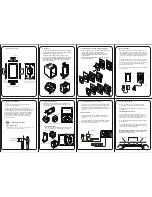
8 of 12
5.0 eleCTrICal InsTallaTIon
5.1 PlannIng and desIgn
•
All modules are manufactured with a sealed junction box and pre-attached cables and locking connectors. These
components should not be modified or tampered with in any way.
noTe: Installers shall ensure that the polarized locking connectors are from the same supplier when connected on the
same string. do not mix polarized interlocking connectors from different manufacturers—including connections at the
inverter, combiner boxes, and modules. doing so will void the warranty. refer to section 7.2 for connector types.
•
Ensure connectors are clean and dry before establishing connection.
•
Ensure that all wire, fusing and disconnects are appropriately sized for the system design according to national, regional,
and local codes.
•
Electrical characteristics are within plus or minus 5% of rated values for Isc, Voc, Impp and Vmpp. Modules may operate
under conditions which may be significantly different than STC. SunEdison suggests multiplying specified ratings by a
minimum of 1.25 times or more when specifying the system and balance of system components. Installer should adhere
to all local, regional and national codes before planning and design of the system.
Refer to local codes before planning
and design of the system. For detailed electrical characteristics, please refer to Section 7.0, page 10 through 11 of this
Installation Manual.
•
Determine the maximum number of modules connected in series using the following formula: Ns = Vmax
s
/ Voc
m
Where:
N
s
equals the maximum modules in series
Vmax
s
equals the maximum system voltage and is limited to a maximum of 1000 V for IEC and 600 V for UL
Voc
m
equals the module open circuit voltage at coldest conditions for the site (refer to local codes)
warnIng: Installers should adhere to all applicable local, regional, and national codes and regulations when designing
and constructing the photovoltaic system.
noTe: In colder climates, it may be necessary to further reduce the maximum number of modules in series by using voc
m
at the minimum expected operating temperature.
5.2 Module wIrIng
•
The module includes wires and polarized locking connectors from the junction box on the back of the module. The
wires have sufficient length to connect to adjacent modules in either a portrait or landscape configuration assuming
the minimum spacing between module frames. Field replacement of connectors or cables must be avoided and it will
invalidate the product warranty. Polarized locking connectors of the same type and make are required for all series string
wiring. The maximum operating temperature of wires and connectors should not exceed 85ºC.
•
When installing panels in landscape orientation, use of the 1.3 meter lead lengths will ensure enough cable length
to make adjacent, module-to-module, string connections, assuming a maximum spacing of 50mm between adjacent
modules.
•
When installation panels in portrait orientation, use of the .55 or 1.0 meter lead lengths will ensure enough cable length
to make adjacent, module-to-module, string connections, assuming a maximum spacing of 50mm between adjacent
modules.
Installation Manual: sunedison silvantis 60 Cell Pv Modules
© Copyright 2013 SunEdison, Inc.































